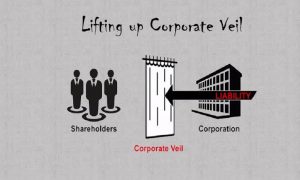This Article has been authored by Anam Fatima student of BA.LL.B , 4th year from Integral University Lucknow.
Table of Contents
Introduction
Today, in the world of globalization and digitalization, there is a lot of competition among the companies and this competition is increasing day by day. Merger and acquisition are a prominent activity in the world of business competition that helps companies and industries to tackle rapid challenges.
Merger and acquisition (M&A) are considered as a process that helps in combining two or more companies into one single entity and this process is considered as one of the most powerful ways that can bring together two companies. The Process of amalgamation of two companies can take place through two ways:
- Merger
- Acquisition
Merger can be simply understood as where two companies come together and join hands to become one sole company (generally by exchanging shares). Merging of two companies can take place only when both the companies agree to do so and one might pay the other company cash or swap shares. Swap shares simply means that companies agree to share the risk and benefits of a deal.
Companies agreeing to merge will form one common new company that will bear a new name. The general motive behind merging is to make the company stronger and more successful.
Acquisition allows one company to purchase assets of another company. A company also absorbs the liabilities and interests of another company in acquisition.
This process of merger and acquisition helps companies to expand its business, increase its efficiency and in this way the value of a company automatically increases.
Types Of Mergers And Acquisition
There are four kinds of mergers and acquisitions: Horizontal, Vertical, Concentric and Conglomerate.
In all the above-mentioned types, two or more companies combine with each other to form one. This process is a lengthy procedure and involves many steps.
Horizontal Merger & Acquisition
It takes place when two different companies of the same industry merge with each other, such companies generally offer the same kind of services. Merger of these companies leads to increase in customer base and market share and also leads to reduction in competition.
For instance: Microsoft and Nokia. In the year 2014 Microsoft acquired Nokia’s mobile device division bringing together two major companies in technology.
Vertical Merger & Acquisition
It takes place between two and more companies that belong to the same industry, however they are not at the same stage of supply chain for similar commodities.
Let’s take an example: A producer company of organic packaged food merges with an organic farm, creating a vertical merger where both businesses benefit by combining their operations.
Some major positive points of vertical merger are: increasing profit, easy operation of business and major drawbacks are: high costs of administration, differences in the values and manners of merging companies.
Concentric Merger & Acquisition
This form of M&A comes into action when two companies offer different kinds of products and services; however , these companies operate in similar industries.
For example- If a laptop manufacturing company merges with a company that produces laptop-carrying bags so in this way the sale of both the products will go hand-in-hand as both the products are complementary to each other.
In such M&A, sale of one product increases the sale of another one and hence leads to generation of greater profit.
Conglomerate Merger & Acquisition
When two companies merge with each other or when a company acquires another company and these companies originate from different industries then such form of merger and acquisition is termed as Conglomerate.
In conglomerate merger & acquisition companies differ in many ways such as production stage, sale of products, industry.
Objectives And Reasons For Merger And Acquisition
OBJECTIVES
- One of the major objectives of mergers and acquisition is expansion of business. This process of M&A allows companies to amplify their sales and reach. It also leads to more productivity and better efficiency.
- Merger and acquisition also help in tackling market competition simply by reducing competition and competitors as well. Companies join hands and come together and this ultimately leads to reduction in the number of competitors.
- M&A causes revenue maximization. A company that is facing loss can grow by merging with a gain-making company. In this way the reputation of a loss-making company gets protected and also attracts customers.
MAJOR REASONS
- Efficient, powerful and more capable single company is formed by a combination of companies. M&A leads to decrease in pressure of competition and also increases the efficiency of companies. Achieving revenue synergies is another prominent reason for M&A.
- New customers, markets and various new industries are being attracted towards the company when one company is acquired by another one in a new geographical market location.
- It also helps companies to earn greater shares of markets and in this way their standard in markets rises up.
- M&A also supports companies to increase their availability of options for products and services, thus attracting more customers, not only this but it also unlocks access to latest technologies, thereby making a brand stronger.
- Rapid growth, vertical integration and creation of synergy are other major reasons for opting M&A.
Process
The process of execution of Merger & Acquisition is a tedious task and takes time. It begins with a primary critical estimation of the company that is a “TARGET“.
Evaluation involves formal and clear conversation between parties. Buyers and sellers discuss various points regarding their companies and the deal. They also communicate how they could benefit each other and this way deals proceed.
Let’s understand the complete process briefly:
- A grand design or a master plan is made. This plan includes major requirements of acquisition and basic needs of the acquirer.
- The design clearly states about expectations of the acquirer. Acquirer now determines its basic standard in order to recognize potential target companies. After this, proper evaluation of target-companies takes place.
- Acquirer then deals with suitable companies (one or more) and parties converse about their queries and try to gather more information. Further, the acquirer seeks more relevant information about the target-company and orders the target company to submit substantial information.
- Once the offer gets accepted, a process of ‘due-diligence’ comes into the picture. This is a very crucial process that involves investigation and verification in all aspects of a ‘target- company’. This process involves financial, legal and operational investigation. Due-diligence is being conducted in order to help the acquirer make a reasoned decision.
- Afterwards the next step is initiated that deals with execution of contract for sale and a final conclusion is made with regard to type of purchase agreement (asset purchase or share purchase).
- Following all these steps, the acquisition deal gets finalized and both the companies work in cooperation for fulfilling the process of merging two companies.
Advantages & Disadvantages Of Merger & Acquisition
Advantages
- M & A is considered as a quick option for achieving growth. This is considered as one of the best options that helps companies to grow faster.
- M&A offers a way to companies for getting into new markets and hence they can attract new customers. This process allows one company to acquire another successful company from a different Market.
- Another benefit of M&A is that loss-making companies may get benefitted after merging with a profit generating company.
- M&A allows a company to expand its geographical area of business that may ultimately enhance the company’s potential to provide goods and services to a large number of people.
Disadvantages
- It may cause more retrenchment.
- Difficulties may arise for company owners to run a bigger firm that is being formed post-merger.
- A consumer has to pay more for products or services due to less competition in the market.
- Process of M&A requires a lot of time, money and energy.
- Process of “due-diligence” is very complicated and time-consuming work.
Conclusion
Mergers and acquisitions are a prominent part of business activities and this process is utilized by companies and firms for achieving better growth and customer reach. This process is complicated and requires a lot of time however it may lead to significant growth, development and better efficiency. Various kinds of M&A provide unique and a variety of benefits to the companies.
Reference Links
- https://corporatefinanceinstitute.com/resources/valuation/mergers-acquisitions-ma-process/
- https://www.sacattorneys.com/articles/advantages-and-disadvantages-of-mergers-and-acquisitions/
- https://www.ukessays.com/essays/marketing/the-benefits-of-mergers-and-acquisitions-marketing-essay.php
- https://www.wallstreetmojo.com/mergers-and-acquisitions-types/
- https://cleartax.in/glossary/vertical-merger
- https://www.wallstreetmojo.com/mergers-and-acquisitions-types/
- https://www.startupfino.com/blogs/top-5-reasons-for-merger-and-acquisition-benefits-of-ma/
- https://www.pricefx.com/learning-center/what-are-the-key-objectives-of-acquisitions-and-mergers#
- https://firmroom.com/blog/reasons-for-mergers-acquisitions
- https://dealroom.net/blog/pros-and-cons-of-mergers-and-acquisitions



